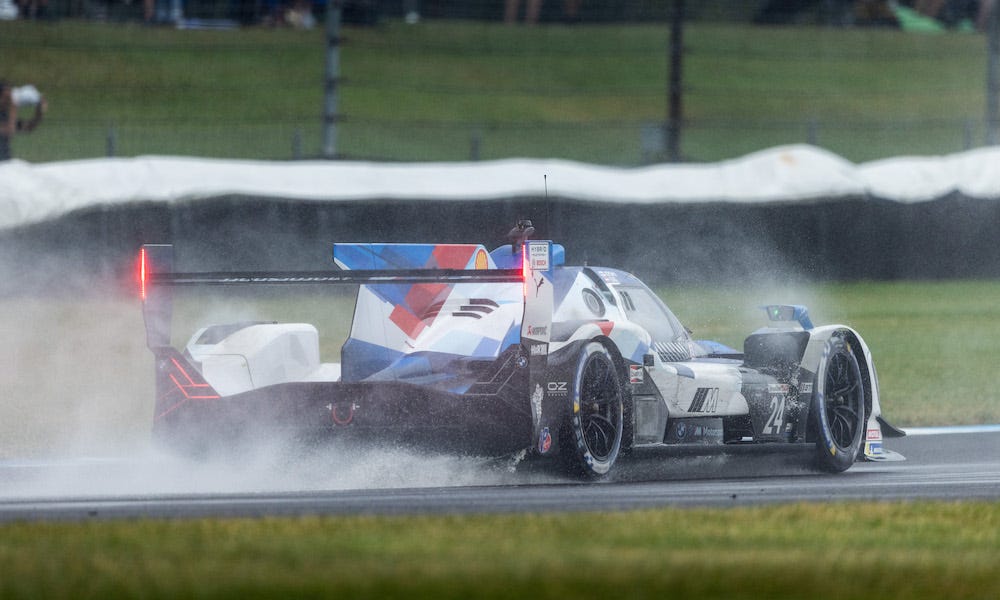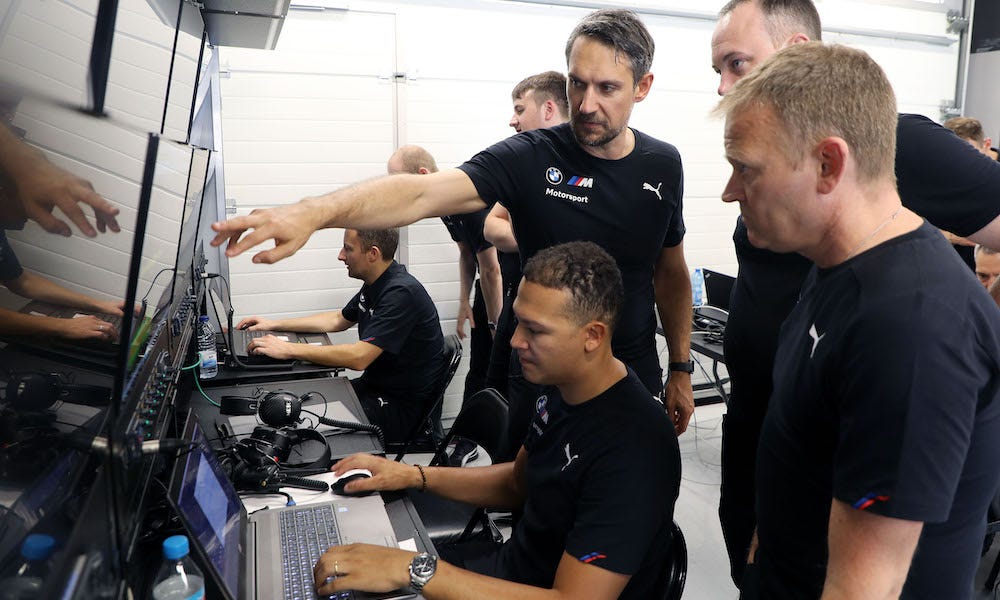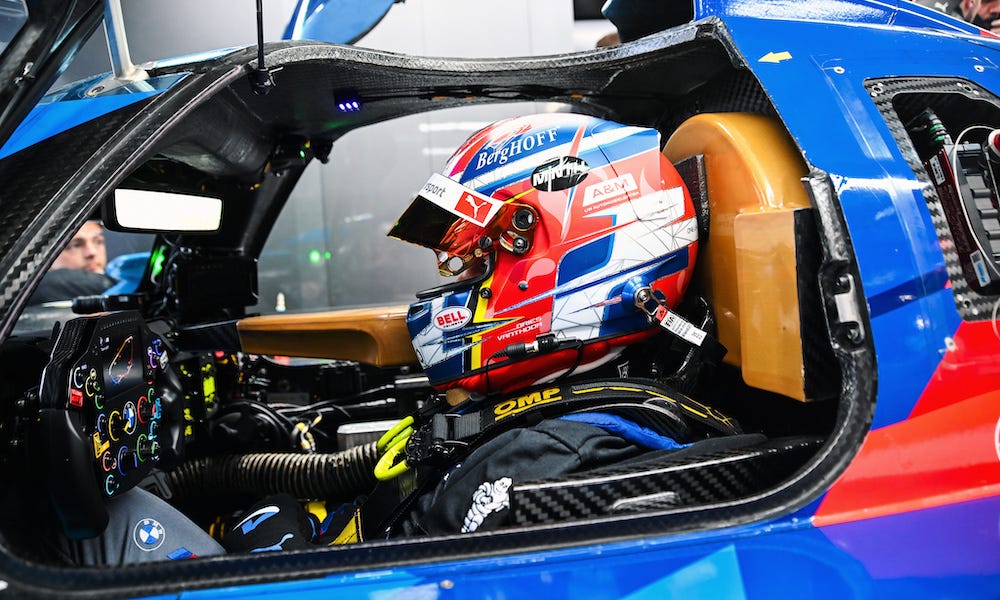Insight: BMW’s Path to Becoming a GTP Race Winner
Sportscar365 examines the behind-the-scenes work that turned the BMW M Hybrid V8 into a race winner in IMSA WeatherTech SportsCar Championship competition...
It’s been a good couple of weeks for BMW’s global prototype racing effort. After a difficult first half of the year, in which the program showed flashes of promise that yielded little results, significant breakthroughs came in both the FIA World Endurance Championship and IMSA WeatherTech SportsCar Championship.
First, BMW M Team WRT scored the first world championship podium for the BMW M Hybrid V8 when Raffaele Marciello, Dries Vanthoor and Marco Wittmann finished third in the 6 Hours of Fuji. Then, just seven days later, BMW M Team RLL scored a 1-2 in the Battle on the Bricks at Indianapolis Motor Speedway.
That latter result, coming in the second year for the GTP effort led by Rahal Letterman Lanigan Racing, was particularly significant. Although Nick Yelloly and Connor De Phillippi were awarded a victory at last year’s Sahlen’s Six Hours of the Glen after a penalty for Porsche Penske Motorsport, BMW had so far been the only one out of the original batch of four GTP manufacturers to not have won a race on the road.
Add to that the additional fact that neither M Hybrid V8s had even scored a podium this season up until last weekend, and it further highlights just how crucial that win had been. No wonder Bobby Rahal hailed it as the “most important” in RLL’s history.
To a certain extent, BMW had always been the odd one out in the original group of four GTP manufacturers. Two of them (Acura and Cadillac) came straight from the DPi era. While Porsche didn’t, its operational partner Team Penske had just finished up a three-year stint racing the Acura ARX-05. BMW, nor RLL, had any such experience.
As Valentino Conti, BMW’s head of trackside engineering, explains, this put the German brand at a disadvantage.
“In America especially, you can see that the teams which have run the DPi cars have a very good understanding of what the track needs,” he says. “We are still catching up. We have RLL, it's experienced in America, but really experienced only in GT [racing]. So we had to catch up.”
At least on the surface, that catching up now appears to be taking place at a significant rate. RLL finally has its first on-the-road win in the U.S., while the Vincent Vosse-led WRT crew is unlocking more and more performance in WEC and has shown itself particularly well in the last two rounds in Austin and Fuji.
Those gains are largely down to a significant development effort out of Germany, the U.S. and Belgium. Conti outlined two key areas where significant steps have been made, but where further gains are still to be found.
The first is software. It might not be the first thing you think of when it comes to race car development, but in this era of Balance of Performance racing it is actually one of the most significant areas of car improvement and has only become more prominent in the last decade or so. As Conti explains, strong and consistent software development can have tremendous upsides.
“At the end of the day, traction control is for sure one part where you can always work and you can always improve,” he says. “It's also a critical part for us. This is definitely an area, but then also there's other functions on the car which you always want to develop and you want to improve because you can influence the balance a little bit here and there.
“Also on the braking because the braking is not only hydraulic, the braking is also in combination with the hybrid system and energy recovery. So you want to play a little bit with these areas and you want to identify what is best. So actually, there's a lot of performance on that side.
“Another thing: you have a power curve which you have to follow and obviously this thing is set with vibrations and oscillations and so on. It's very hard to match the power so sometimes you overshoot [or] you undershoot so you have to take some margin and then you also want to reduce this margin as much as possible.
“This is constant work. There's a lot of areas where you can constantly work and software never ends. We were coming from Formula E. Mechanically, we were basically not touching that car for two years, but with the software there was a new thing basically coming every week.”
When it comes to software and electronics, the racing side often gets a helping hand from BMW’s road car developers. This is partially possible because of a company restructure in 2021 that created the current BMW M Motorsport setup and allows the competitive division to link up with its high-performance automotive department.
Frank van Meel, who was appointed to his second term as BMW M CEO in the same year, outlines the concrete benefits of having the two sides work together in developing the M Hybrid V8.
“We also use our R&D department from BMW M to support racing,” Van Meel told Sportscar365 earlier this year. “The electronics in our LMDh cars are done by our series production people. Not for everything, but a lot.
“Because they have a lot of experience and we have a big community of developers there. So they can actually help make the electronics work. In Daytona, we had some issues with the steering wheel electronics. So that's where [they] help out.
“And you always have the spillover that if you work on the other side, you see some things and say, ‘Okay, I can use that for the series production cars as well.’ Especially also on [the] engine [and] drivetrain when it comes to energy saving. Because that's the main issue in series production cars, but also in racing because we've got our kilojoules here.
“Some people always think that in racing you don't care about energy consumption, but that's not true. That's something that's a really big commonality between racing and series production cars, especially with the hybrid system. Like in the XM or now in the new M5, you want to have maximum efficiency and also in the race car.
“And if the engineers are also overlapping, you pick up things and use them either in the race car or you use things from racing in series production cars.”
Another point of concern with this generation of prototype has been the occurrence of vibrations, something that Conti says has been ‘an issue in general’ with this ruleset. As he reveals, BMW’s struggles almost led to a significant overhaul on the engine side.
“I have to say we also had vibration issues, not only affecting the hybrid system but various parts of the car,” he says. “We did some thorough analysis and also I have to say we also were thinking of a change on the engine concept, but now we identified all the areas and basically found solutions in the areas and then I think we can stick to the concept.”
That’s not to say that there were no changes. Quite the opposite, in fact. Those studying BMW’s WEC onboards throughout the course of the season might have noticed a significant change between May’s 6 Hours of Spa-Francorchamps and the 24 Hours of Le Mans: the introduction of a new steering wheel.
“We were doing vibration analysis on the whole car and we identified the areas and one part was the steering wheel,” Conti revealed. “This vibration, it's quite interesting. I also have to say we underestimated a little bit. We knew also from old projects that vibration is an issue, especially with this engine concept.
“We went on to a rig [in the] very early stages, and we identified already the areas where some issues will be, and they occurred in the areas at the end of the day.”
It’s clear that BMW and its partners have invested a lot of time and effort into improving the M Hybrid V8 as a package in order to get it closer to the front in both IMSA and WEC. Now that significant results have finally started rolling in, the goal from all involved will be to continue to build on the recent string of success.
Photos: BMW, DPPI







